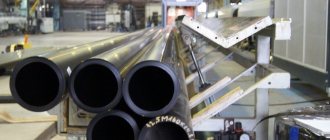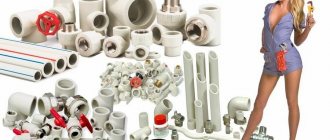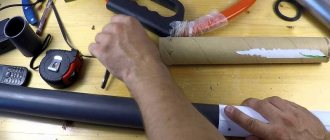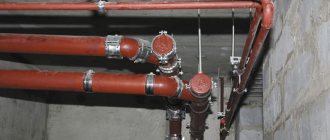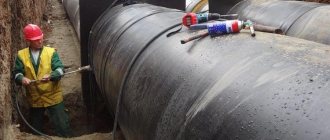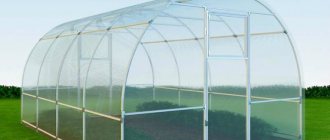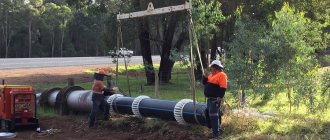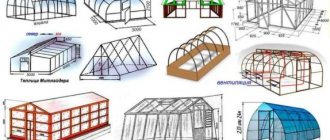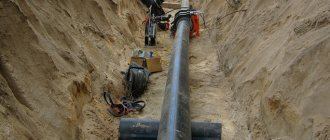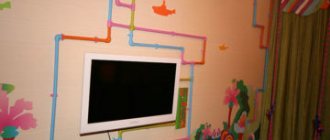A pipeline means an engineering communication in which the working substance is supplied through pipes (water, gas, oil, etc.). To ensure a high-quality supply, it is necessary not only to lay it correctly, but also to carry out repair and maintenance work from time to time. Here you just can’t do without joining the elements together. Let's look at what pipe welding is, how to weld pipes using electric welding, and what techniques need to be applied in practice to create a sealed pipeline.
Types of pipelines and welding
There are a huge number of pipelines that are used to move different materials and working fluids. Based on their purpose, there is the following classification:
- technological;
- main lines;
- industrial;
- gas supply pipelines;
- water;
- sewer.
In the manufacture of pipelines, various materials are used - ceramics, plastic, concrete and various types of metals.
Modern welders use three main methods for joining pipes:
- Mechanical is carried out due to explosions as a result of friction.
- Thermal, which is carried out by melting, for example by gas welding, plasma or electric beam.
- Thermo-mechanical is produced by a magnetically controlled arc using the butt contact method.
There are many types of welding, which are divided into many classifications. Before you weld pipes, you need to figure out what is the best way to do it. Theoretically, each type is suitable for welding pipes of small and large diameters. It can be carried out by melting and pressure. Melting methods include electric arc and gas welding, and pressure methods include gas press, cold, ultrasonic and contact. The most common methods for connecting communications are manual electric arc and mechanized.
What types of connections are there?
In most cases, processing of pipe joints before and after welding is carried out using a conventional electrical source of alternating current. In most cases, electric current is the most economically advantageous option, which allows welding work to be carried out with minimal financial costs compared to using a direct current source.
In general, when carrying out welding work, several connection options are used, in particular:
- Butt method.
- Corner connection.
- Overlapping.
Each of these options also has several subtypes, which differ in basic technical, mechanical and other parameters, for example, in the number of seams used, the presence or absence of bevels of the edges used, and the method of joining operations.
Welding pipes using electric welding with consumable and non-consumable electrodes
It is most effective to weld technological pipelines with an electrode manually or using an automatic machine. This can be a method of working with a consumable or non-consumable electrode (argon-arc welding). Pipe welding technology is implemented in three main stages:
- Preparatory, which is divided into two parts - preparation of the master and preparation of the material. The preparation of a welder should be taken very seriously, since his safety depends on it. Be sure to prepare special clothing and a protective eye mask to prevent burns from bright sparks. By preparing parts we mean thoroughly cleaning pipes for welding from corrosion, paint and contaminants. Before manual arc welding of pipelines, you need to thoroughly treat the joints and the area adjacent to them with a metal brush or sandpaper. If this is not done, there may be “gaps” in the seam itself, since the material will not “get caught” on the contaminated pipe.
- Welding process. When everything is ready, you can start. The most important thing in the arc method (whether it is done manually or with an inverter) is to hold the arc. First you need to ignite the electrode and initiate the arc. Then the seam is fully completed. Its type is selected directly by the master during the work process. The method of guiding the electrode and the technology of pipeline welding in general is influenced by many factors - the location of the pipes, the material they are made of, and the preferences of the welder.
- Checking the quality of work. When the seam is ready (do not forget to beat off the slag that forms above it in the form of a roller), you can start communication to control the quality of the connection.
The technology for welding water pipes, gas pipelines and other utilities is almost the same. It is important to follow the sequence of actions and take into account the types of seams in different positions, since the quality of communication will depend on the ability to weld them.
Assembly of pipes for welding
Proper assembly of welding requirements ensures that the weld joint has the same clearance around the entire circumference of the pipe. This prevents problems with insufficient root penetration, which can reduce the life of the finished weld.
Parts should be selected with matching internal diameters of pipes.
The parts are clamped into special assembly devices, which should hold the pipes during welding, so that during the welding process of the root of the seam or passage, the parts do not change, move closer to each other and do not move away from each other.
Assembly performed using tacks requires careful inspection of them for defects. If any, the tack is cut out and welded again. During welding, all tacks are melted.
How to join pipes
For a beginner who wants to master welding perfectly, it is necessary to know all the intricacies of this process. There are more than 30 methods for welding two pipes. Let's look at the most common pipe welding methods:
- in the corner;
- in the Taurus (perpendicular to each other);
- into the joint;
- overlap
The type of pipe joining is selected depending on the type of metal, type of welding and nature of communication. For example, pipes for a central heating system are most often connected end-to-end using electric welding. For a high-quality seam, the main thing is to make penetration throughout the entire thickness of the product.
A major role in the technique of welding pipes using manual arc welding is played by seam types, which are classified into four main groups:
- horizontal;
- lower;
- vertical;
- ceiling
Each of these methods has its own implementation technology. The most convenient and easiest way to make a quality connection is the bottom position. If it is possible to move and rotate the element, then the master tries to install them in the lower position. At the same time, during operation, the metal does not flow down, as with a vertical seam, and does not splash to the sides, as with a ceiling position. Welding of process pipelines is carried out using all these types, since communications have many branches.
Based on the type of seam duration on the pipeline, they are divided into continuous and intermittent seams.
Common Mistakes
Very often, correction of defects and modification of welding joints is caused by inaccurate preparation of the seam. To get good welding results, avoid these common mistakes:
- Very often you can find beveled edges with an angle that is too sharp, which leads to poor penetration of the weld seam into the depth of the weld joint.
- Not good enough to remove oil, dirt, paint or varnish from the base metal. Improper cleaning methods can cause the grout to become porous. Using grinders is the fastest way to clean the welding area. Make sure you clear at least 2-5cm from the end of the piece to prevent foreign material from getting into the seam.
- Not following welding procedures may seem like a good way to save time and increase productivity, but it can also lead to further rework, corrections, and failed welds. Before welding pipes, you should familiarize yourself with the specifications and technological processes, they usually contain the correct bevel angle, gap size, weld root size and other important details.
Welding reinforcement
You can cook fittings, like pipes, in different ways. Electric arc welding with inverters is most often used; electrodes of the ANO or MR brand are used for this. The welding process is quite simple, the main thing is to know some nuances, which are based on the welding current mode, the size of the reinforcement section and the connection method.
As for the diameter of the reinforcing bars, they must be welded taking into account the diameter of the electrodes. So, when the diameter of the reinforcing bar is less than 14 mm, an electrode with a diameter of 3 mm is required, and more than 14 mm, an electrode with a diameter of 4 mm is required. There are no strict requirements regarding this ratio, i.e. Large diameter fittings can also be welded with 3 mm electrodes. It should be noted that when welding critical structures, it is better to adhere to the above-described ratio, although much depends on the qualifications of the welder.
As with pipes, there are several ways to connect fittings:
- Butt.
- Lap.
- T-bar - at right angles.
- Angular - at an acute angle.
- Cross – used when creating meshes.
Typically, to connect reinforcement using the first two methods, electric arc welding with an inverter or transformer is used. The rest are connected by resistance welding.
When connecting end-to-end reinforcement of large diameter (more than 16 mm), it is necessary to sharpen the rods to create a groove filled with electrode metal. To do this, the edges of the rods are ground to a cone with an angle of 45-50°. If overlap welding is carried out, then it is necessary to take into account the length of the weld seam or the length of the overlap, which is the same thing. There is a certain ratio between the diameter of the rod and the length of the overlap, depending on the brand of reinforcement:
- If two A400C grade reinforcements are connected to each other, then the length of the overlap should be equal to eight diameters of the reinforcing bar.
- A500C – 10 diameters.
- B500С – 10 diameters.
For example, if reinforcement with a diameter of 12 mm was used to assemble the structure, then the length of the weld should be ten times greater, that is, 120 mm or 12 cm.
When welding with overlap, grooved reinforcement must be ground to a rectangular cross-section in order to increase the contact area. This simultaneously increases the quality of the weld.
Welding of fittings is carried out in a certain mode with precise selection of current. This parameter is selected because there is no exact data regarding the diameter of the rod, the diameter of the electrode used, or the brand of reinforcement. Therefore, the welder first tries to carry out the welding process at a certain current value. For example, if the electrode begins to stick to the rod, then this indicates a low current and should be increased.
Resistance welding of reinforcement
To carry out resistance welding of reinforcement, special equipment is used, which is based on a transformer that supplies current to one of the two electrodes. Between the latter, two connecting reinforcement rods are clamped, into the gap of which an electric current is supplied, passing from one electrode to the other. The metal is heated and melted, and the pressure from the electrodes creates the necessary pressure, which in general ensures a strong and reliable connection of the two fittings.
There are 2 spot welding technologies: soft and hard. Soft is:
- smooth heating;
- more time for the entire process;
- current density at the electrode is not more than 100 A/mm²;
- The speed of current flow occurs in 1-3 seconds.
Hard:
- current density 120-300 A/mm²;
- current flow time 0.1-1.5 seconds;
- Accordingly, the welding time is short.
Hard technology means increased productivity, but increased power consumption and significant load on the power supply network.
The welding mode will largely depend on the brand of fittings being joined. Some of them, for example, steel reinforcement of class A-1, are welded by continuous melting. Class A 2-4 rods are welded using intermittent technology with preheating. But if the resistance welding machine does not meet the required power (depending on the strength and diameter of the reinforcement), then any class is welded with heating.
Maybe
Types of pipe joints and requirements for pipelines.
When connecting pipelines, several types of pipe joints are used. So they distinguish:
- rotary (a);
- fixed (b);
- horizontal (c).
Before starting welding work, pipes must be checked for compliance with the requirements. So they should:
- Have a quality certificate.
- They should not be elliptical.
- The pipes should not show any difference in wall thickness.
- Their chemical composition and mechanical properties must meet the relevant GOST standards.
In addition, before starting to prepare pipes for welding, it is necessary to check the perpendicularity of the cutting plane relative to the pipe axis, the amount of blunting (2-2.5 millimeters) and the opening angle of the pipe edges (should be 60-70 degrees).
